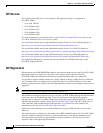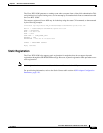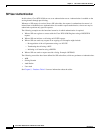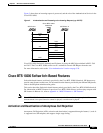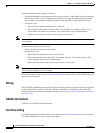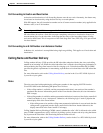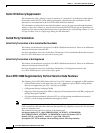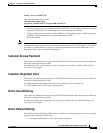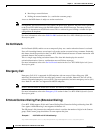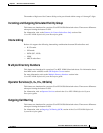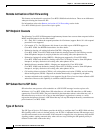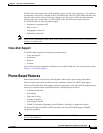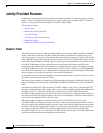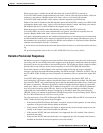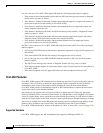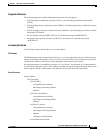
2-10
Cisco BTS 10200 Softswitch SIP Protocol User Guide
OL-5352-03
Chapter 2 SIP Protocol Subscriber Features
Cisco BTS 10200 Softswitch-Based Features
2. Receiving a second dial tone
3. Dialing the external number (i.e., outside the customer group)
Access to the DOD feature is subject to station restrictions.
Note For IP phones, the second dial tone is provided by the phone itself. However, the prefix code is presented
to the Cisco BTS 10200 along with the DDD number in the INVITE message. Secondary dial-tone
capability is dependent on the SIP device used. This is achieved by provisioning a suitable dial plan
configuration on the phone.
For more information, refer to the DOD For PBX section in the Cisco BTS 10200 Softswitch System
Description guide.
Do Not Disturb
Do Not Disturb (DND) enables a user to temporarily busy out a station when the feature is activated.
If no call forwarding features are activated, calls to the station are routed to busy treatment. Preferably,
this feature should be provided on the Cisco BTS 10200 Softswitch because of feature interaction with
advanced features like executive override.
This is a single stage dialing activation feature. The Alert-Info header plays the result of
activation/deactivation, Success: confirmation tone and Failure: messages.
For more information, refer to the Do Not Disturb section in the Cisco BTS 10200 Softswitch System
Description guide.
Emergency Call
Emergency Call (911) is supported for SIP endpoints with one caveat: If the calling party (SIP
subscriber) disconnects the call, the called party control is not available. Otherwise, the call will be
released. Expanded emergency service (E911) does not require this, but basic emergency service (911)
does. Both 911 and E911 are supported for MGCP endpoints.
Note PSAP is selected based on default user location. No mobility is supported.
For more information, refer to the Emergency Call section in the Cisco BTS 10200 Softswitch System
Description guide.
E.164 and Centrex Dialing Plan (Extension Dialing)
Cisco BTS 10200 supports E.164 and Centrex Dialing Plan (Extension dialing) addressing from SIP
User Agents. AOR addressing is not supported in Release 4.4.
The SIP phone’s dial plan must be configured so that it considers the number of digits in the Centrex
group. Each Centrex group should have its own separate dial plan.
Example 1 A SIP URL with E.164 addressing
sip:4692551234@rcdn.cisco.com;user=phoneA sip:50603@rcdn.cisco.com;user=phone



